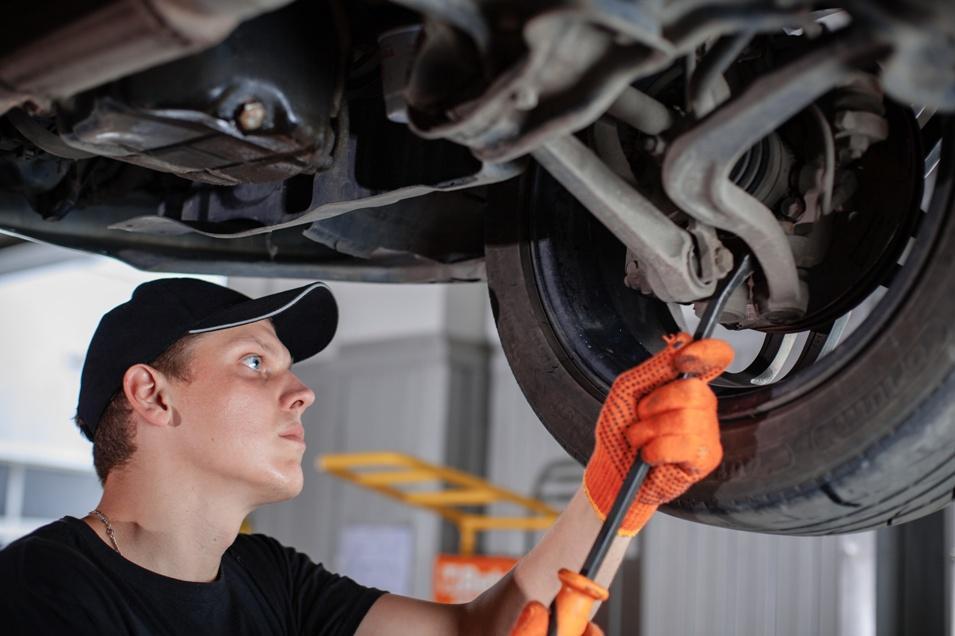Wondering What are the Symptoms of a Bad CV Joint?
Many drivers are not aware that the performance of their vehicle's wheel system is basically dependent on the condition of the CV joints and car axles. These components are involved in the steering, driving, and braking of the vehicle, linking the power from the engine to the wheels. They must be in such a condition that they are able to carry the whole weight of the vehicle, plus passengers and cargo. If undamaged, these joints can last up to 100,000 miles without need for replacement.
You may be wondering just what are CV joints? Simply stated, CV joints are an intricate ball and socket joints, connecting the axles to the front wheels, essential for transferring the torque from the transmission to the drive wheels at a stable speed. For example, on front-wheel drive vehicles, there are two joints on each of the two-car axles, one connected to the tire and one connected to the transmission. To ensure smooth operation, a CV joint is packed with grease and sealed with a rubber "boot". So long as this boot stays intact, your joints are protected and power is supplied to your wheels. But what happens when it fails? If CV joints fail, the effect is immediate and sometimes dangerous, since power will no longer transfer from the engine to the tires.
What are the symptoms of a bad CV joint?
Preventing CV joint failure is possible by knowing what to listen for and where to look. If a CV joint begins to fail while driving, your car will start to pull to one side as one wheel loses power. When the joint breaks completely its corresponding wheel will no longer turn and although the engine may still run, the car won't move. You may see smoke coming from the broken joint and your front tires won't point in the same direction since one will be completely disconnected from its drive axle. You may feel vibrations or a loud clunk sound when you accelerate, along with grinding or clicking noises when you turn.
What do you do if you experience CV joint failure? If possible, slowly steer your car off the road and then call a tow truck. Failing CV joints pose a serious risk so be sure to get your car into your auto shop as soon as possible. If there is only a small crack in the outer CV joint, your mechanic may be able to simply replace the CV boot and repack the grease, but for any major damage, an entirely new joint is necessary.
Wondering what are the symptoms of a bad CV joint? Contact our ASE Certified technicians at Phil's Service today for more information about CV joints and car axles and to schedule an appointment. Our auto shop proudly serves residents in the community of Killeen, TX, and surrounding area.
If you're wondering what are the symptoms of a bad CV joint, call your mechanic today at Phil's Service to schedule an inspection of your car axles.
Many drivers are not aware that the performance of their vehicle's wheel system is basically dependent on the condition of the CV joints and car axles. These components are involved in the steering, driving, and braking of the vehicle, linking the power from the engine to the wheels. They must be in such a condition that they are able to carry the whole weight of the vehicle, plus passengers and cargo. If undamaged, these joints can last up to 100,000 miles without need for replacement.
You may be wondering just what are CV joints? Simply stated, CV joints are an intricate ball and socket joints, connecting the axles to the front wheels, essential for transferring the torque from the transmission to the drive wheels at a stable speed. For example, on front-wheel drive vehicles, there are two joints on each of the two-car axles, one connected to the tire and one connected to the transmission. To ensure smooth operation, a CV joint is packed with grease and sealed with a rubber "boot". So long as this boot stays intact, your joints are protected and power is supplied to your wheels. But what happens when it fails? If CV joints fail, the effect is immediate and sometimes dangerous, since power will no longer transfer from the engine to the tires.
What are the symptoms of a bad CV joint?
Preventing CV joint failure is possible by knowing what to listen for and where to look. If a CV joint begins to fail while driving, your car will start to pull to one side as one wheel loses power. When the joint breaks completely its corresponding wheel will no longer turn and although the engine may still run, the car won't move. You may see smoke coming from the broken joint and your front tires won't point in the same direction since one will be completely disconnected from its drive axle. You may feel vibrations or a loud clunk sound when you accelerate, along with grinding or clicking noises when you turn.
What do you do if you experience CV joint failure? If possible, slowly steer your car off the road and then call a tow truck. Failing CV joints pose a serious risk so be sure to get your car into your auto shop as soon as possible. If there is only a small crack in the outer CV joint, your mechanic may be able to simply replace the CV boot and repack the grease, but for any major damage, an entirely new joint is necessary.
Wondering what are the symptoms of a bad CV joint? Contact our ASE Certified technicians at Phil's Service today for more information about CV joints and car axles and to schedule an appointment. Our auto shop proudly serves residents in the community of Killeen, TX, and surrounding area.
